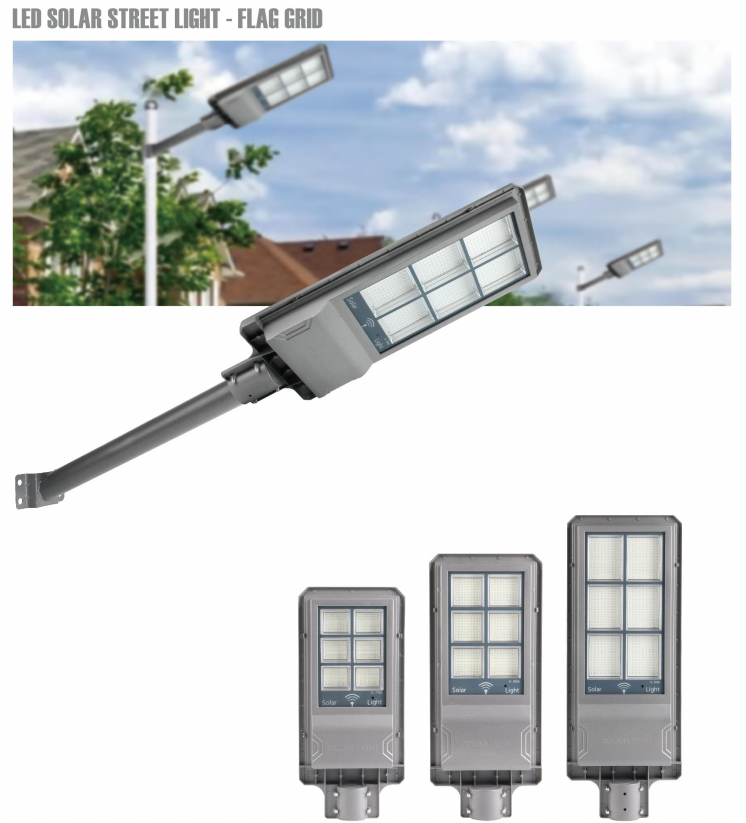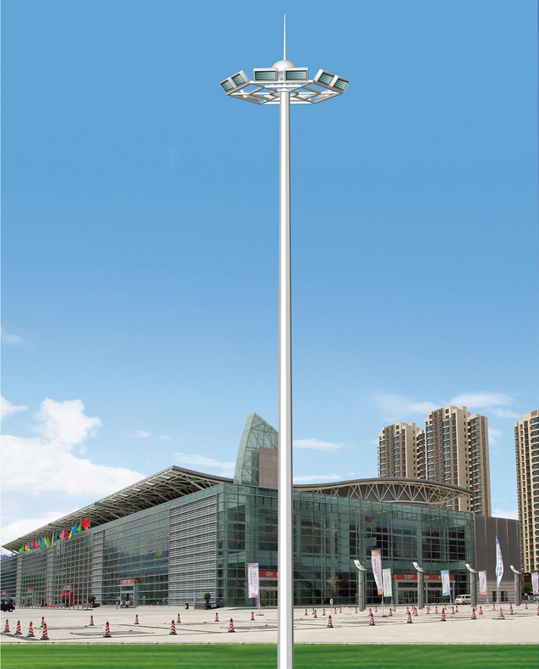5G Smart Street Light System
The 5G smart street light system is a new intelligent infrastructure that integrates 5G communication, Internet of Things, cloud computing, big data and other technologies. By integrating multiple functional modules, it achieves deep integration of intelligent street light management and urban services. The following introduces the system architecture, core functions, technological advantages, application scenarios, and development trends:
1、 System architecture: Multi level technology integration
The 5G smart street light system uses the 5G network as the communication base and achieves functional collaboration through a four layer architecture of "perception layer network layer platform layer application layer":
1. Perception layer: data collection center
Intelligent light control module: integrates photosensitive sensors and microwave radar, automatically adjusts brightness according to light intensity and traffic flow (such as reducing power to 30% at night), with an energy-saving rate of up to 40%~60%.
Environmental monitoring sensors: Built in PM2.5/PM10, temperature and humidity, noise, wind speed and direction sensors, etc., real-time monitoring of urban microenvironment (such as air quality warning in industrial parks).
Video surveillance/AI camera: equipped with 4K high-definition camera and AI algorithm, supporting facial recognition, vehicle tracking, violation capture, and crowd density monitoring (such as scenic spot passenger flow warning).
Other peripherals: charging station (supporting fast charging for electric vehicles/electric cars), LED information screen (displaying weather and traffic announcements), one click alarm device (emergency button).
2. Network layer: Empowered by 5G communication
5G base station integration: Deploy micro 5G base stations (AAU devices) at the top of lamp posts, taking advantage of the dense distribution of lamp posts to solve the "last mile" coverage problem of 5G networks, with a single pole coverage radius of about 200 meters.
Multi network integration: Supports multiple communication protocols such as 5G NR, NB IoT, LoRa, etc., compatible with devices from different manufacturers (such as sensors and charging stations), achieving "one pole for multiple uses".
3. Platform layer: Intelligent management center
Cloud management platform:
Remote monitoring: Real time display of street lamp status (on/off, malfunction, energy consumption), supporting map visualization management (such as GIS electronic map annotation of the location of each street lamp).
Intelligent dispatching: automatically adjust the lighting strategy according to the time period, weather and events (such as rainstorm warning), for example, turn on the strong light mode to guide vehicles in typhoon days.
Data analysis: Statistics on energy consumption trends, equipment failure rates, and environmental data changes to assist urban planning (such as analyzing the optimization of lighting schemes during peak nighttime pedestrian flow in commercial areas).
Edge computing node: deploy computing resources near the terminal device side to handle low latency tasks such as video analysis and real-time control (such as millisecond response to security events).
4. Application layer: City service extension
Smart lighting: dynamic dimming, automatic fault reporting (positioning accuracy ≤ 5 meters), remote switch control.
Smart transportation: real-time road condition monitoring, illegal parking capture, traffic flow statistics (data access to traffic management platform), guidance screen navigation.
Smart security: video surveillance linked to public security system, one click alarm docking with 110 command center, suspicious personnel behavior analysis.
Convenient services: free WiFi hotspot (single pole coverage bandwidth ≥ 100Mbps), electric vehicle charging (60kW fast charging station), public broadcasting (emergency notification).
Environmental governance: real-time reporting of pollution data, on-site dust monitoring linkage sprinkler, rainstorm waterlogging early warning (combined with water level sensor).
2、 Core functions and technological advantages
The unique value of 5G communication
High bandwidth: Supports high-definition video playback (such as real-time transmission of images from 4K cameras), VR/AR city tours, and other high traffic applications.
Low latency: millisecond level response remote control (such as emergency shutdown of faulty street lights), real-time perception of road conditions by autonomous vehicles (key nodes for vehicle road coordination).
Big Connection: A single base station supports access to over 100000 IoT devices, meeting the massive sensor networking needs of future smart cities.
2. Energy saving and operation advantages
On demand lighting: Reduce ineffective lighting duration through dynamic dimming, combined with solar panels (optional) to achieve "light storage straight and flexible", further reducing energy consumption.
Intelligent operation and maintenance: automatic fault location (such as abnormal current alarm), remote firmware upgrade, automatic work order distribution, maintenance efficiency increased by more than 70%, and labor costs reduced by 50%.
3. Infrastructure intensification
One pole for multiple purposes: replacing traditional independent facilities such as streetlight poles, communication towers, monitoring poles, billboards, etc., reducing urban space occupation (the comprehensive cost of a single pole is reduced by 30% to 50% compared to traditional multi poles).
Landscape optimization: Integrated design is simple and beautiful, supporting customized appearance (such as imitation wood grain, artistic shape), suitable for historical districts or modern business district styles.
3、 Typical application scenarios
1. Urban main roads/highways
Function combination: 5G base station+intelligent lighting+video surveillance+meteorological monitoring+information screen.
Scenario value:
Real time transmission of highway traffic images to assist traffic police in easing congestion;
Automatic activation of foggy mode (high penetration light+speed limit reminder) in severe weather conditions (such as heavy fog);
Provide roadside units (RSUs) for autonomous vehicles to achieve vehicle road cloud collaboration.
2. Commercial districts/scenic spots
Function combination: intelligent lighting+WiFi hotspot+advertising screen+environmental monitoring+charging station.
Scenario value:
Push merchant discounts and scenic area guide maps through LED screens;
Monitor tourist density and coordinate with security personnel to divert passenger flow;
Provide temporary charging services for tourists' mobile phones and electric vehicles.
3. Industrial parks/ports
Function combination: Strong lighting+Intelligent security+Gas monitoring+Industrial Internet of Things gateway.
Scenario value:
Real time monitoring of harmful gas (such as VOCs) leaks in chemical industrial parks, triggering warning linkage spray systems;
Port container truck autonomous driving guidance (through 5G transmission of positioning data) improves cargo turnover efficiency.
4. Rural/Remote Areas
Function combination: solar power supply+emergency broadcasting+security monitoring+information dissemination.
Scenario value:
Addressing the issue of weak rural power grids and ensuring lighting continuity through photovoltaic energy storage;
Emergency broadcasting broadcasts disaster warnings, agricultural technology knowledge, and monitors rural security (such as preventing forest fires).
4、 Development Status and Challenges
1. Global construction progress
China: As of 2024, a total of over 2 million 5G smart light poles have been built nationwide, mainly concentrated in smart city pilot cities such as Shenzhen, Shanghai, and Beijing. The cost of a single pole in Shenzhen is about 80000 to 150000 yuan (including equipment and construction).
Overseas: Singapore plans to deploy 17000 "smart light poles" integrating 5G, environmental monitoring, and electric vehicle charging; Cleveland, USA collects data through smart light poles to optimize traffic signals, reducing commuting time by 15%.
2. Key challenges
Difficulties in cross departmental collaboration: involving multiple departments such as transportation, urban management, communication, and electricity, it is necessary to establish a unified planning and accountability mechanism (such as the establishment of a "multifunctional pole" management office in Shanghai).
Data security risk: The city data collected by cameras and sensors should comply with the Data Security Law, and edge computing localization and encryption transmission should be strengthened.
High initial investment: The comprehensive cost of a single pole (equipment+5G base station+construction) is about 100000 to 200000 yuan, far exceeding traditional street lamps (about 30000 to 30000 yuan), and the cost needs to be shared through "one pole for multiple purposes" (such as communication operators paying for base station leasing fees).
5、 Future trend: evolving towards "urban intelligent terminals"
Energy Interconnection: Integrating photovoltaics, energy storage, and charging stations to create "microgrid" nodes and participate in urban power grid peak shaving (such as street lamp energy storage transmitting electricity during peak electricity consumption).
AI deep integration: Introducing generative AI (such as GPT-4) to automatically analyze video content (such as identifying road potholes and illegal constructions), and generate processing suggestions to push to the urban management department.
Standardization and modularization: Develop a unified national interface standard (such as communication protocol, mounting device specifications), support plug and play, and reduce manufacturer adaptation costs.
Business model innovation: Through diversified income such as advertising screen revenue, communication base station leasing, charging service fees, etc., achieve a "construction operation value-added" closed loop and attract social capital participation.
summarize
The 5G smart street light system is not only an upgrade of urban lighting, but also the "nerve endings" and "digital foundation" of new smart cities. With the deepening of 5G network coverage and the maturity of AIoT technology, its functions will evolve from single lighting to "communication center+data hub+service terminal", becoming one of the core infrastructure for the future green and intelligent development of cities.










Please first Loginlater ~